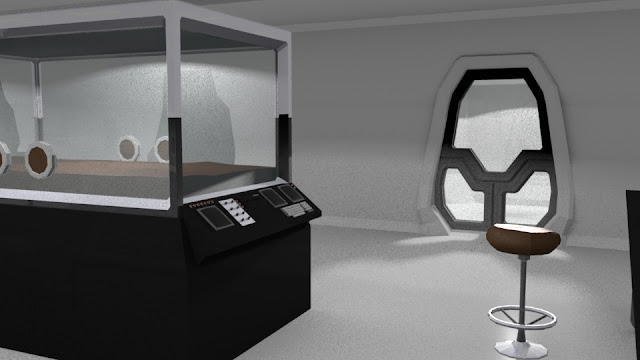With some planning, Four has a slightly nicer eye, something that is a little less human
I may go a little larger with the iris but at present the iris' coverage is quite solid, leaving only a small amount of white. The eye could be signed off.
Four's boy also needed some simplification. Going over I removed controls that could be covered by a spline IK, which bend the joints along a curve tied to control joints.
The eyes are rigged and controls are set, the eyelids are connected and the membranes are set as well. So the priority for the weekend is to link up the last nodes, the digits on the and and feet and the fins, tying the controls for the tendrils on the head, then limiting everything so the pose corrections don't break.
In hindsight, this was a more important model, as it will be present for much of the second half of the animation.





















































